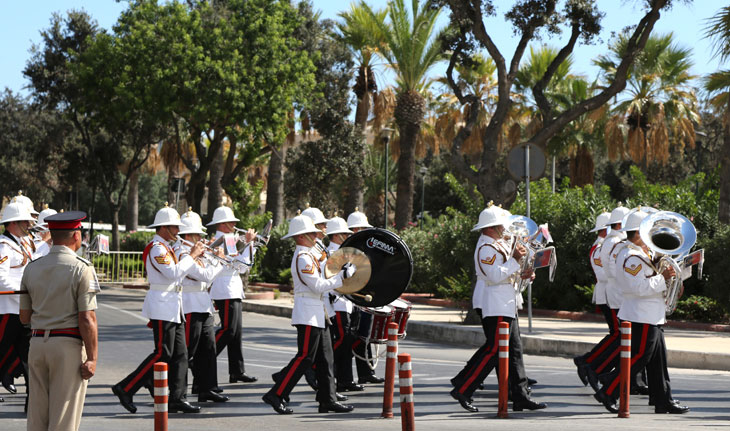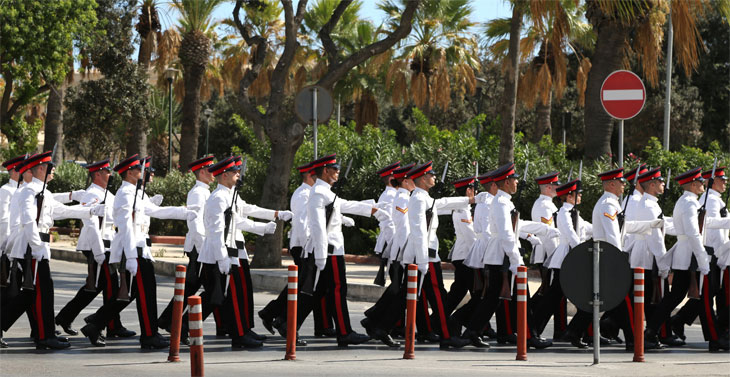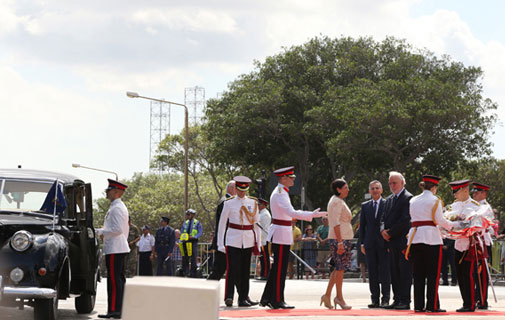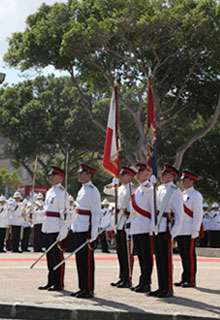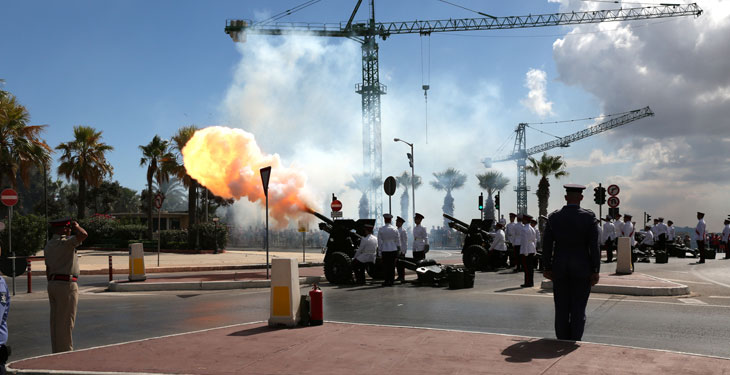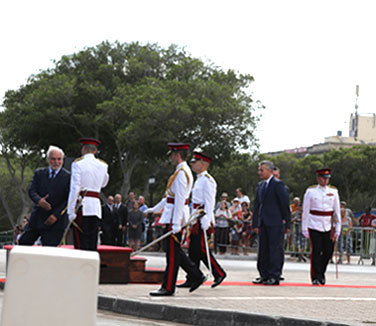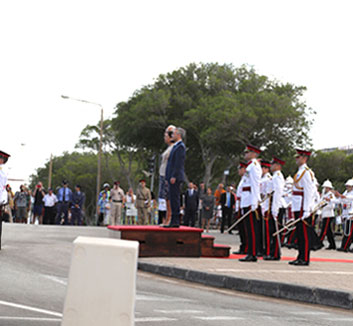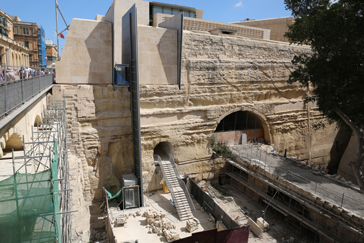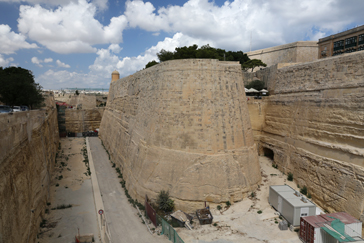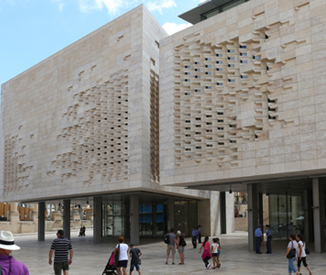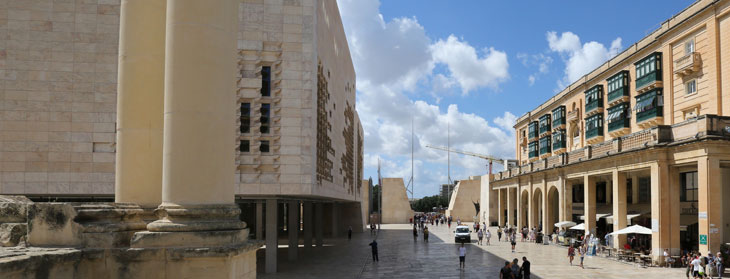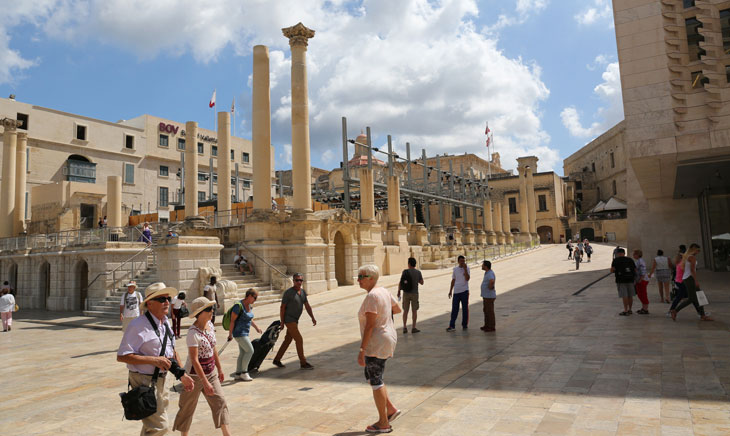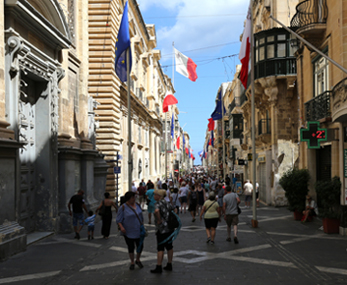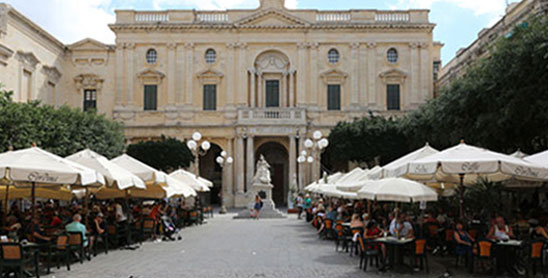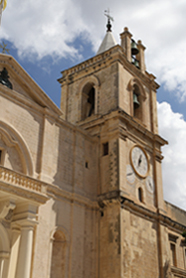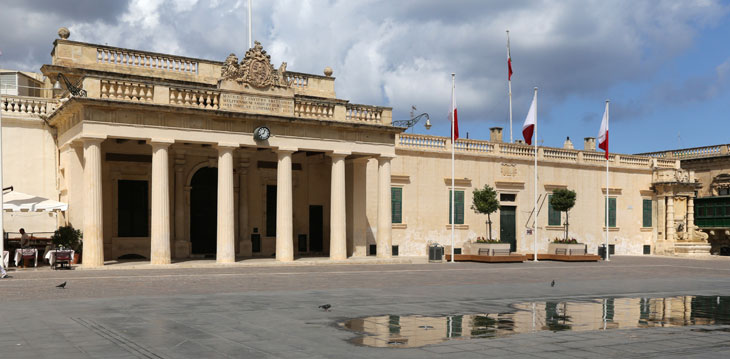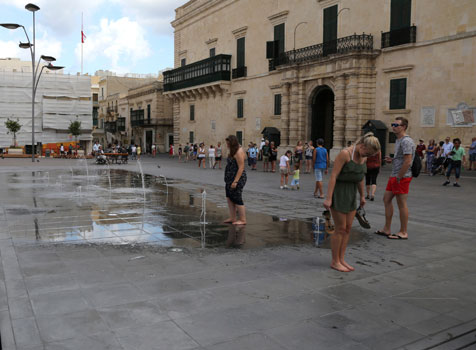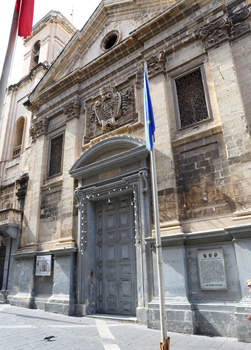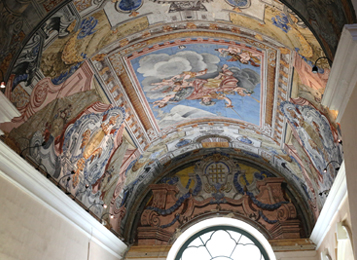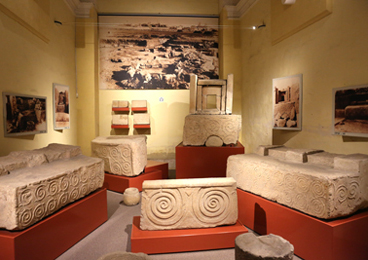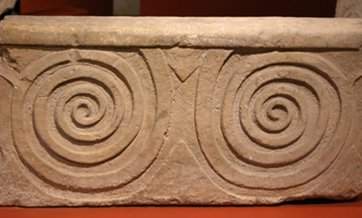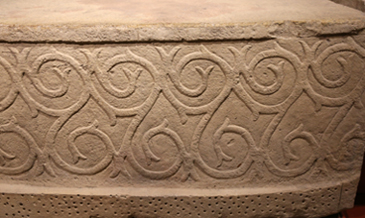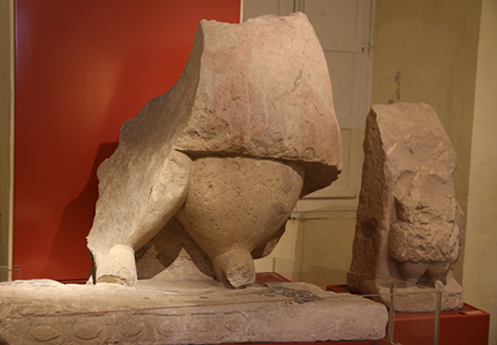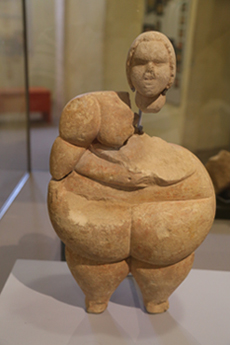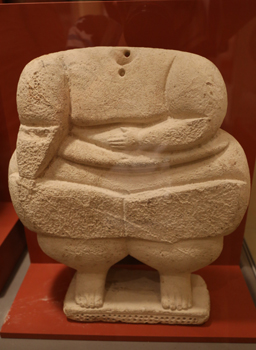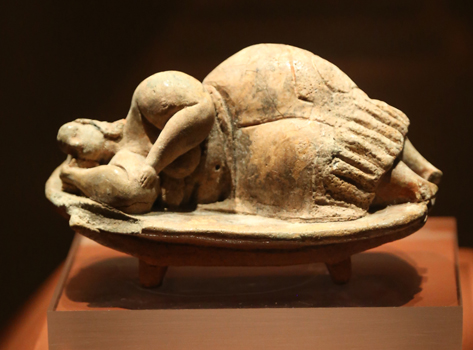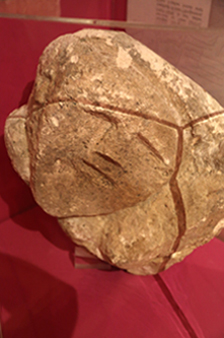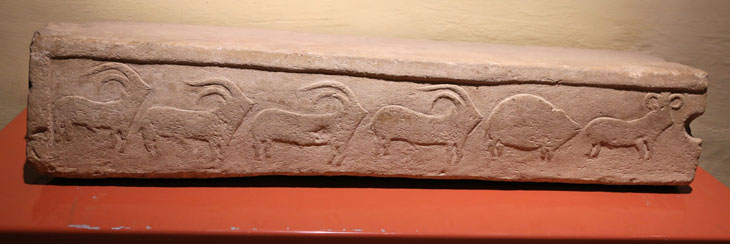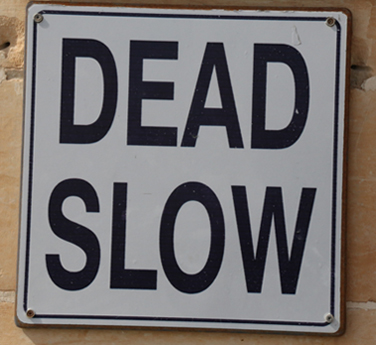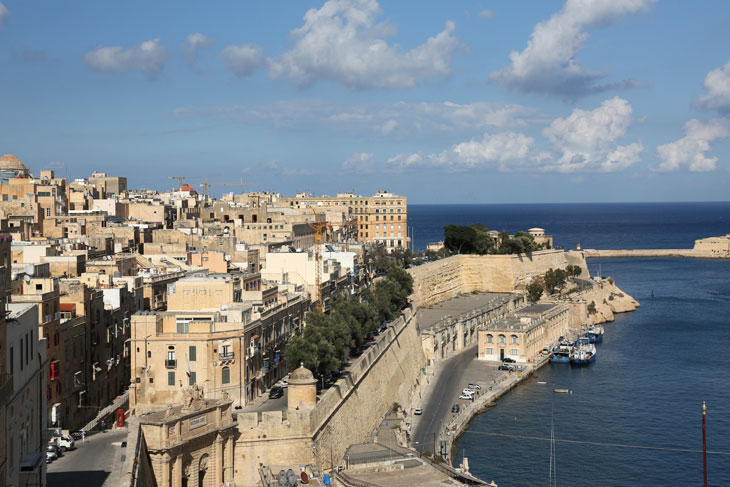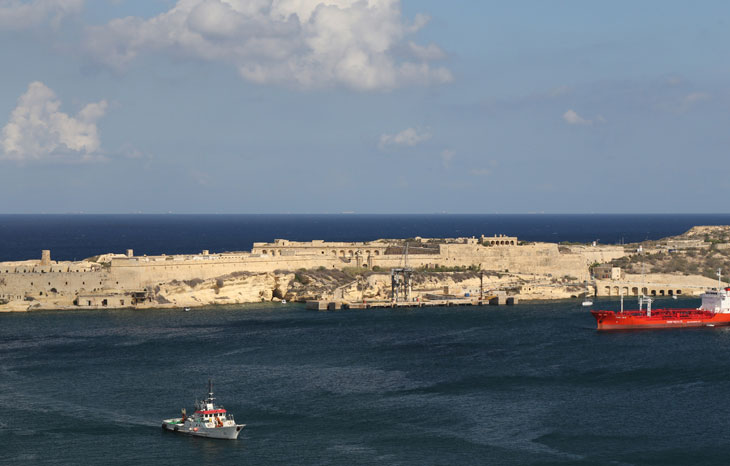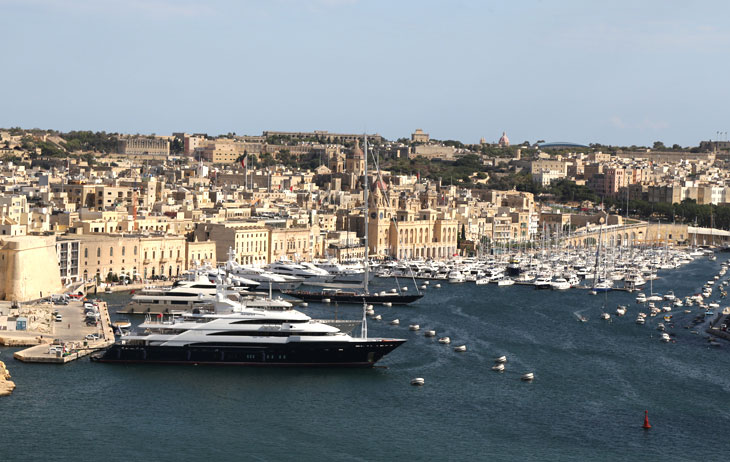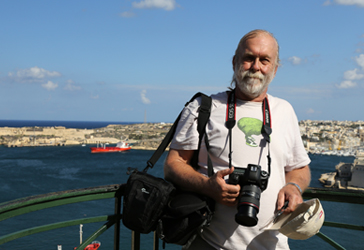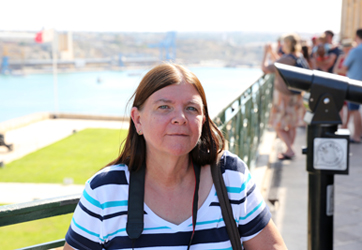Childhood Dreams
Day 1 - Valletta
Each morning our group gathered to enjoy the impressive breakfast buffet in the hotel. With the
exception of our hosts, I don't think anyone in the group knew everyone else. We lingered
over coffee as we got acquainted and made our plans for the day. The 2016 presidential
election was looming, and it was a contentious time in America so Noelle had given strict
orders that there were to be no political discussions. Although the group was overwhelmingly
liberal, there were exceptions. This restriction was a relief. Politics were becoming
increasingly depressing, and this was, after all, a celebration.
On that first morning, several of us decided to begin our explorations with a stroll through
Valletta. We were just about to set off when we were told that there would be a ceremony nearby
to celebrate Independence Day. Because of Malta's strategic location, it has been conquered and
ruled by many invaders over its long history. On September 21 each year it commemorates the day
in 1964 when it officially gained its full independence from its last foreign ruler - Great Britain.
We joined the crowd by the Independence Monument. A group of soldiers in front of us were
setting up a cannon while other soldiers and a military band were lining up in a parking lot
just behind where we stood.
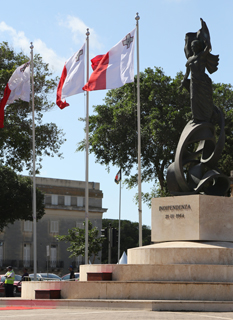
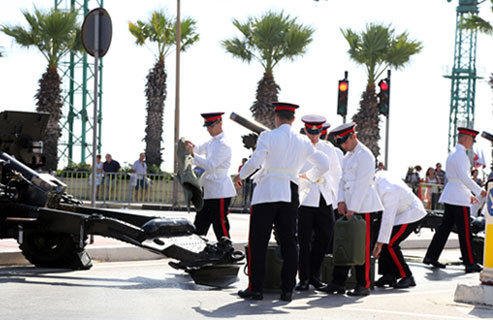
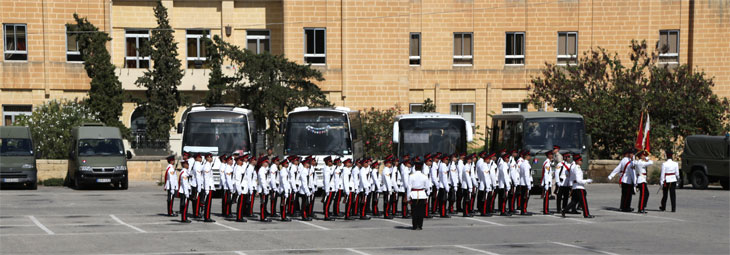
There was a short march up the street followed by a rather long wait while everyone sort of
stood around wondering what would happen next.
Finally several fancy cars pulled up and an important-looking person got out of each one. I
believe this is Marie-Louise Coleiro Preca, the president of Malta. Each dignitary placed a
bouquet of flowers at the foot of the monument.
The cannons were fired several times. Walt managed to get this great shot.
Then the dignitaries were hustled away in their cars, and we resumed our walk to Valletta.
The Triton Fountain pictured below occupies the center of a busy traffic circle near the bus terminal.
It was installed in 1959 and served as the focal point for several festivities. Musicians would
perform on platforms built on the upper platter, and ramps were built for motorcycle demonstrations.
Over the years, the structure weakened until 1978 when the arm of one of the Tritons boke and the
platter collapsed damaging two of the figures. Unsuccessful attempts at
restoration were made over the years, but the fountain was still inoperable during our visit.
We also passed the Hotel Phoenicia, still isolated by a construction barrier, on our way to the Valletta City Gate.

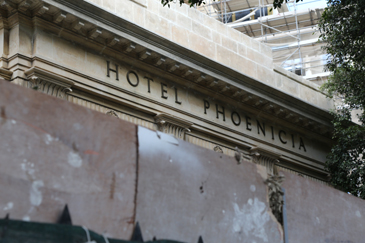
I must confess that I was greatly confused by the city gate and the area surrounding it. Although
work was apparently finished in 2014, it has the appearance of still being in progress. As you walk
over the bridge that leads to the new gate designed by Renzo Piano, you look down at the ditch and
fortifications that protected the old city dotted with scaffolding, construction shacks, fences,
and rubble.
There is no "gate" in the usual sense of the word. It is rather a break in the wall, or gateway, made
of blocks of stone and framed by two tall steel poles.
The ultra modern Parliament House sits on one side of the street just inside the gate, and a
shopping arcade sits on the other. It all seems a bit strange, but if you look at pictures of the
totally unimpressive 4th city gate which stood on the site briefly from 1965-2011 and the carpark which
sat on the Parliament House site, this is definitely an improvement.
Looking back towards the gate.
The next structure on the street was also baffling. It seems that this is the remains of the Royal Opera
House which was destroyed in a bombing run in 1942. As part of the Renzo Piano gate project, it has been
converted to an outdoor performance venue called Pjazza Teatru Rjal.
We continued on down Republic Street enjoying the ambiance and occasional encounters with other members of
our group. The church below is historic St. John's Co-Cathedral.
At St. George's Square, people cool off in the water that erupts from fountains placed at street level.
The level of water was low on this day, but I have seen other pictures with water squirting high into the
air.
The day was hot and dry. We were discovering that no matter how much water you drink in Malta,
it is never enough. As we passed the National Museum of Archaeology on our way back to the hotel, cool
air drifted out the door and beckoned us inside.
The building itself, built in 1571 for the Knights of the Order of St. John, is lovely. The picture on the
left below shows the ceiling in the foyer. The one on the right shows an exhibit regarding the proliferation of
various spiral designs in the megalithic temples.
Many of the statues that have been found in excavations of the temples are on display.
The current prevailing theory is that are related to prehistory fertility rites.
These are some other items that I thought were interesting.
On the way back to the hotel, we decided to stop to see the much touted
view from the Upper Barrakka Gardens. Just outside the gardens, we passed
the Malta Stock Exchange, and a sign that seemed to indicate that although the
days of British rule are over, the British sense of humor lives on.
The view of the Grand Harbor from Upper Barrakka, the highest point of Valletta, was
even more impressive than we had expected. The Gardens were originally opened in 1661 and
served as an exclusive retreat for the Italian knights of the Order of Saint
John until they were finally opened to the general public in the 19th century.
They sit atop the Saluting Battery of cannons which once protected the harbor.
Gun salutes are now set off twice each day.
If you arranged each picture below to the right of the picture above it, you could see the entire
panoramic view.
By now it was late afternoon. Time to head back to the hotel to compare our adventures
with our fellow travelers over dinner and drinks.



